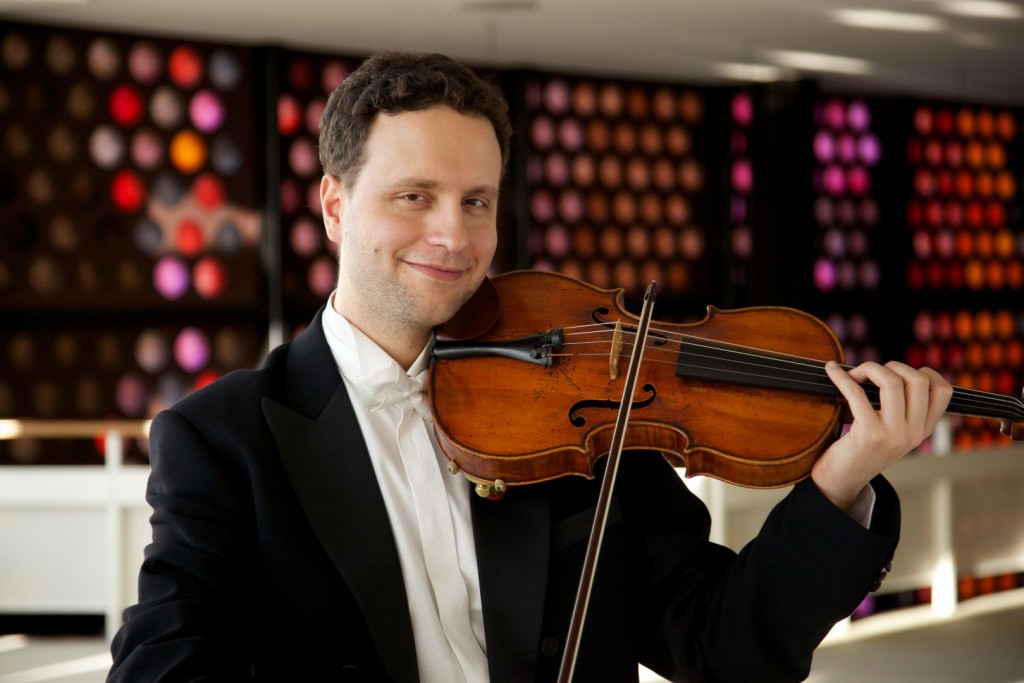Violist Szücs provides a highlight with Boston Civic Symphony

Máté Szücs performed the Walton Viola Concerto with the Boston Civic Symphony Sunday at Jordan Hall.
What do pieces by Jennifer Higdon, William Walton, and Claude Debussy have in common?
To judge from the Boston Civic Symphony’s season-opening concert at Jordan Hall on Sunday afternoon, all three composers share a keen ear for striking orchestral colors, dramatic gestures, and lyrical lines.
Beyond that, there’s plenty to set them apart.
Higdon’s blue cathedral, for instance, thrives on gesture. Premiered in 2000, blue cathedral is a piece with a moving backstory: a memorial, of sorts, to her younger brother who died the year before, it imagines coming to terms with loss via passage through a celestial cathedral.
The score begins with the sounds of tinkling bells and bright percussion instruments before a chorale is played by violas and cellos. Various, long-breathed solo lines emerge and intertwine: violin, flute, and oboe among them. An energetic section gives way to blue cathedral’s eye- (and ear-) catching coda: most of the orchestra take up small Chinese bells and ring them gently while members of the brass section play crystal glasses in an ethereal ending.
Alas, little of what comes before is as memorable. Higdon’s writing, while accessible and sometimes inventive, lacks a distinct melodic profile, ultimately coming across as blandly diatonic.
Still, the BCS’s performance of blue cathedral on Sunday, led by music director Francisco Noya, was a strong one. The brass and percussion sections delivered moments of blazing ensemble. Orchestral solos all sang clearly and sweetly. A handful of balance problems owed more to a big orchestra in a small hall than anything else.
Walton’s Viola Concerto, on the other hand, offers plenty of tuneful invention. A lush example of early-20th-century Romanticism, this 1929 score balances the bittersweet melancholy of Brahms with the Modernist sensibilities of a composer coming of age during the Jazz Age.
And what more persuasive advocate for the Concerto might there be than Máté Szücs? The former principal violist of the Berlin Philharmonic was on hand Sunday to make his case for the Walton, and a mighty one it was.
Playing with honeyed tone, terrific facility, and impeccable intonation, Szücs proved both a brilliant soloist and a generous collaborator. He drew out Walton’s canorous solo writing in the outer movements with warmth and direction, and executed the syncopated demands of the vigorous middle one with limber athleticism.
At the same time, Szücs’ exchanges with the orchestra – the dovetailing lines between soloist and orchestra in the first movement’s recapitulation and the dialogues with orchestral woodwind soloists in the finale – were performed with the utmost attention to rhythmic and articulative detail.
Noya drew a dancing accompaniment from BCS. Aside from a handful of moments in which the orchestra covered the soloist, theirs was an inspired pairing.
Szücs rewarded all with an encore of the opening movement of Bach’s unaccompanied A-minor Violin Sonata.
Debussy’s La mer, which closed the afternoon, convincingly tied the Higdon and Walton scores together: it has arresting figures and motivic cohesion in spades, but adds to them a sense of concentrated musical direction and expressive concision.
Written between 1903 and 1905, La mer lacks a program, standing, rather, as a set of “three sketches” on the theme of the sea. An intricate, subtle score, some of its finer rhythmic details were a bit blurry in Sunday’s performance. But the big picture came across clearly.
The first movement was delicate and warm, especially over the opening and closing pages. Woodwinds, harps, and percussion brought impish spirit to the second movement, “Play of the Waves.” And the concluding “Dialogue of the Wind and the Sea” was full-blooded, the turbulent opening swells nicely etched, transitions appropriately tense, and final apex and coda thunderously rendered.
Boston Civic Symphony’s season continues with “A Family Holiday Pops” at 1 p.m. and 3:30 p.m. December 15. bostoncivicsymphony.org
Posted in Performances




Posted Nov 06, 2018 at 9:51 am by Elizabeth Watson
As a former principal flutist of this orchestra (1981 – 1992), I was interested to hear this concert. Mate Szucs was, of course, fabulous–a sensitive and generous soloist and collaborator. The orchestra has never sounded better, in my opinion. Maestro Noya clearly has excellent rapport with the orchestra, brings out the best in these players with a very professional sound. Bravi!